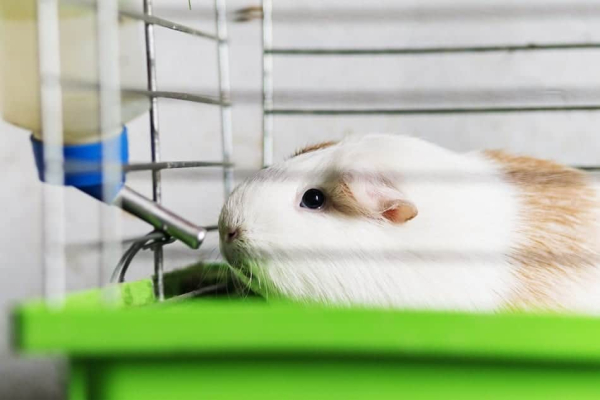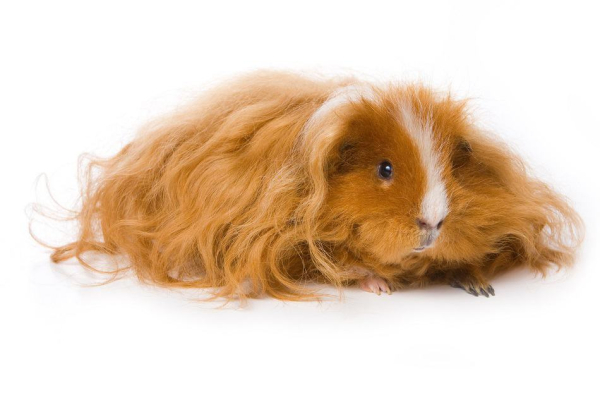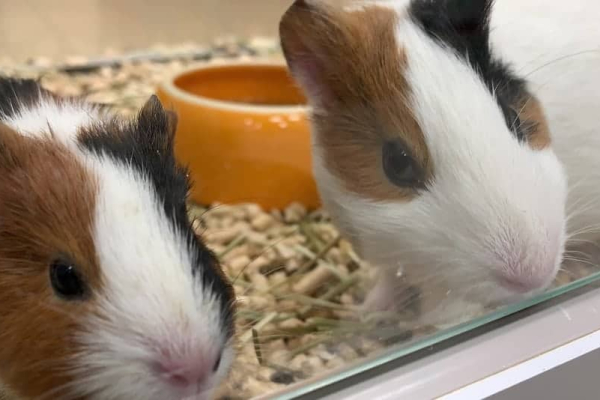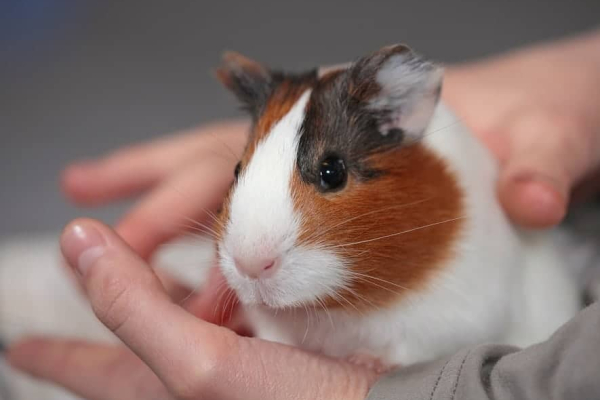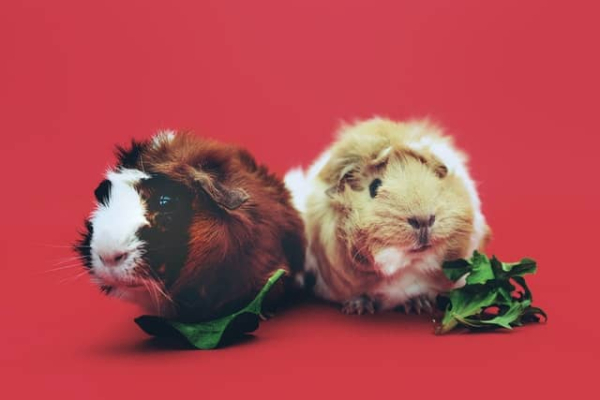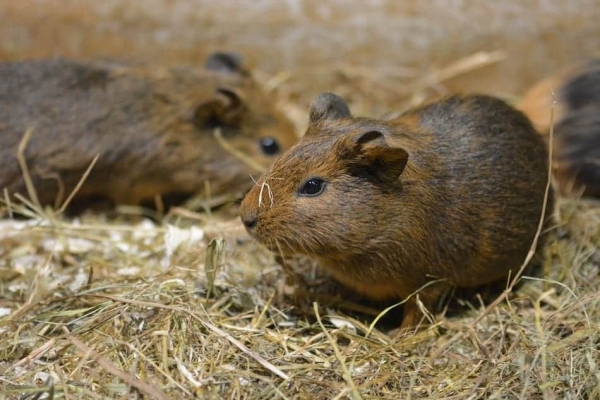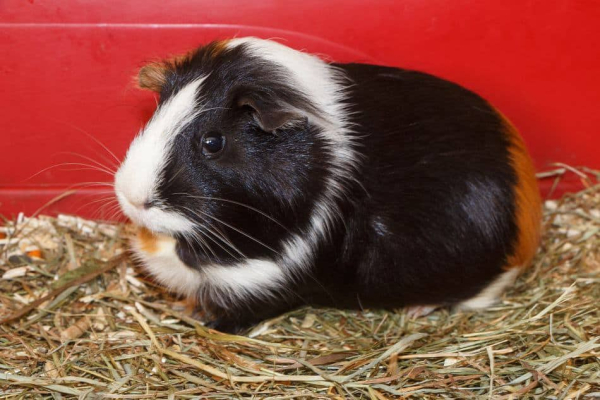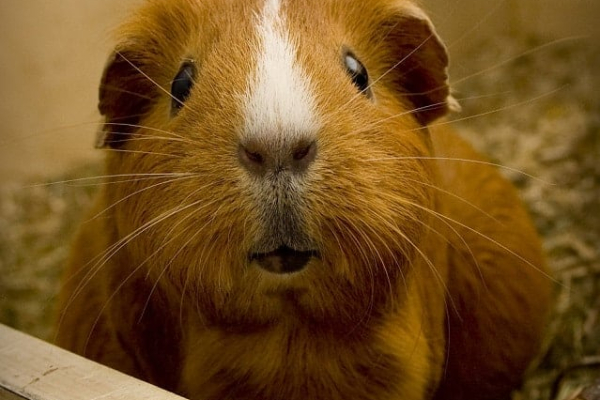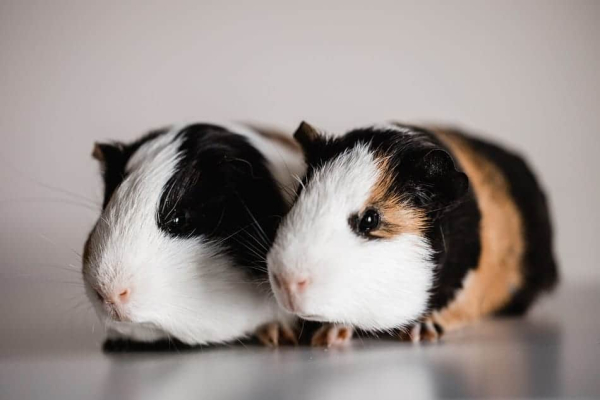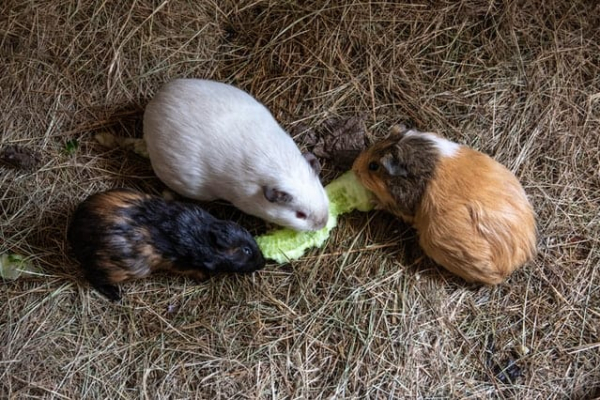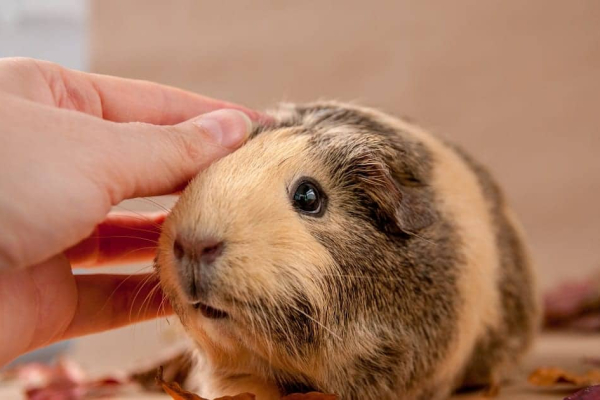
Rodents have poor eyesight. They are unable to decipher colours from black and white or shades of grey. Guinea pigs are part of the rodent family, however, unlike the majority of rodents, guinea pigs do have the capability of seeing colours.
[toc]
Actually, guinea pigs have better senses all around compared to most other rodents. They are not colour blind, and they actually can see most colours correctly. A guinea pig will also use their senses better than most other rodents.
A guinea pig is able to rely on its hearing and its sense of touch also. These senses are much more developed than many the other rodents.
Sight Truths

When it comes down to the facts, a guinea pig can actually see more images per second than a human can. The comparison is that a guinea pig sees 33 per second versus 22 for a human. An additional point for a guinea pig is that they have a gift range that is a total of 340*.
Also, similar to a feline, a guinea pig has what is called tactile hairs alongside their noses, or muzzles. These hairs also help them to ‘see’ items that are in close proximity. It may sound odd, however, a guinea pig’s hearing also helps them to see. Their sense of smell is also of help when it comes to a guinea pig’s sight.
The number of images per second that a guinea pig is able to see per second, prevents blurred vision as they turn their heads.
Guinea pigs do actually have the ability to see some colours. They are able to tell the difference between reds, greens and blues.
However, all these positives in regards to a guinea pig’s sight are actually hurt by the fact that a guinea pig has no sense of depth. The depth perception is definitely not a strong point. If a guinea pig is walking along with a table, it could easily fall and break a bone, get seriously hurt or even have a fatal accident. They are unable to tell how far away the floor is.
Research
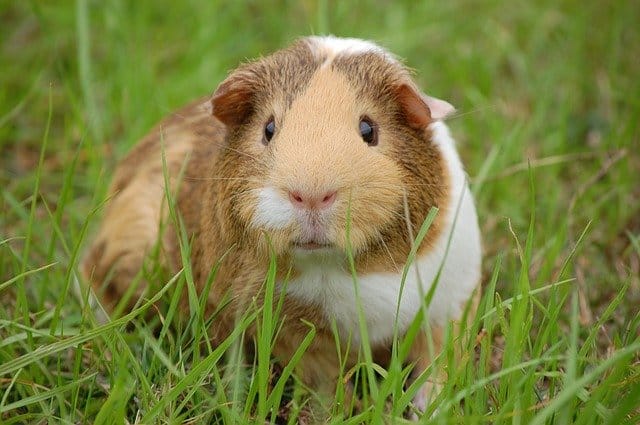
Some research points us to the belief that guinea pigs not only see multiple colours but can also differentiate between colours. A guinea pig can actually tell the difference between many colours also, according to the research.
Opinions still differ as to the colours that a guinea pig is sensitive to. Some Science states that it is the colour green, others say that it is the colour red, that a guinea pig is sensitive to. While still others insist that a guinea pig has Dichromatic ability. This means that it may be only a two-tone ability, but many have shown that they are able to see all the colours, however, how well they see these colours, remains debatable.
Another oddity, although a guinea has the ability of 340* sight, they cannot see food or water that is sitting right in front of them. For this, they rely on the other senses that they have.
Eye Issues

As beneficial as the limited ranges, or lack thereof, there may be times that a guinea pig has very little eyesight at all. A guinea is prone to eye infections and other issues. Pink eye is a very common issue for guinea pigs. This would be pus draining from the eye, and also inflammation of the eye. Other signs of problems with a guinea pig’s eyes that you should watch for include:
- Continuous scratching of its own eyes
- Watery eyes
- Red whites of the eyes
- Discharge of some sort from the eye
- Bulging or inflammation of the eye and surrounding area
- Keeping the eye or eyes closed continuously
Science
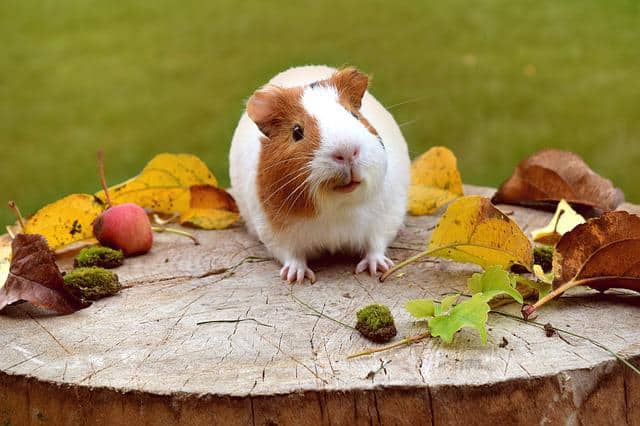
When researchers tested the guinea pigs for colour ability, they did simple tests. One of these highly scientific research studies involved placing a piece of lettuce into a coloured bowl. Lettuce was used as it does not contain much of an aroma. The different coloured bowls included green, red, blue and yellow.
The lettuce was put in one colour bowl, for instance, green. Then the guinea pigs were tested to attempt to recognize which bowl the lettuce was in. By keeping the lettuce in the same colour bowl numerous times, the guinea pigs were able to locate the lettuce multiple times. This included even when the bowls were rearranged into a different order.
This led to Science believing that a guinea pig does see colours. In order for them to be able to locate the small piece of lettuce each time, they had to be able to tell the colours apart. They were able to go to the same coloured bowl each time, no matter which orders the bowls were placed in.
Student Research
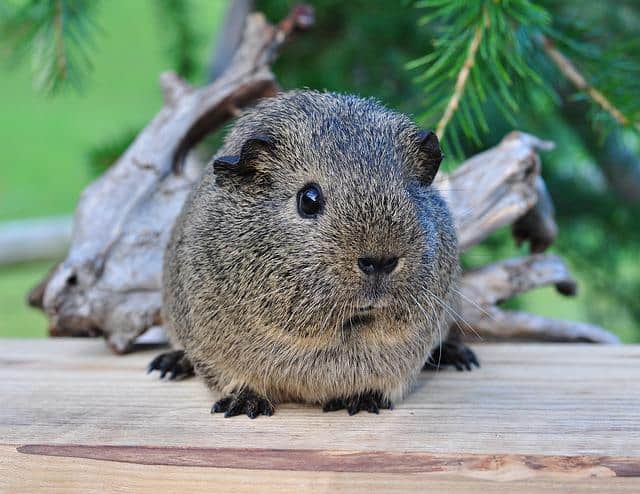
A group of students tested a group of guinea pigs for a period of time also. They kept four guinea pigs in a single habitat. Four different coloured dishes were placed in the housing for the guineas, the results shocked the students. They had hypothesized that the food would be eaten quickly when it was in the green dish. The logic was that the majority of a guinea pig’s diet is green foods, so they believed this would be the first dish.
One major factor was that guinea pigs never ate or drank water from a black bowl. They also noticed that they drank water from the blue bowl most often. When it came to the food, they did not gravitate towards the green bowl as expected, they ate from the yellow bowl most often.
This made the research done by the students, nonrelevant. This is because there were only four guineas involved in the research, not near enough to qualify as a complete research study. What would have made this more relevant is having more guinea pigs, keeping the guineas separated so there was no influence by the others.
According to Scientific discoveries, the scientists who stated that the guinea pigs have dichromatic vision also explain it as the guinea has a limited colour vision. They also only have two cones or photoreceptor cells.
The negativities pertaining to a guinea pig and their vision is easily explained by Science as the guinea pig does not need great eyesight. They have well developed other senses that assist in what they need. All they really need is the ability to see blurry movements.
There is no scientific research to prove if a guinea also has a favourite colour or not. It is widely believed that bright colours are the favourite colour because those bright colours stand out. Many research studies are quick to state that green is a favourite colour of the guinea pig, but this is not proven by any standard. A guinea like many other animals sees a lot of green when they are in the wild. This is or seems to be a colour that they know and associate food with.
Determining if a guinea pig can see colours has been shown. However, determining if they have a favourite colour is not a possibility. Just as with humans, guinea pigs may each have a favourite colour, however, it remains unknown if Science will be able to prove that.
The only Scientific research that has been done and the results fully documented pertained to the colours that a guinea pig can see. These colours are the main primary colours of Red, Blue and Yellow. One other colour that is believed a guinea pig can see is green. This is likely because they are associating green with many items in the wild.
Associating the colour green with grass, leaves and plants, as well as their food, would be instinctual for a guinea pig.
Conclusion

The dichromatic ability in a guinea sight allows them to see certain colours or colour combinations. The guinea is not able to see the full range of colours however, they do have the ability to see a few combinations.
To explain it in simpler terms, a human has 3 different types of colour receptors, a guinea pig has two. A human is able to see a wider variety of colours. Now, while it is understood that a guinea can see colours, and seemingly understand the difference in colours, it is not known to what extent. It is also not known how different the colours they perceive are from the colours that a human can perceive.
Ultimately, it cannot be proven as to the extent of the colour range a guinea is able to see. We also do not know if a guinea is sensitive to any certain colours as some research tries to state. There is simply not enough research done on this species of the rodent family.
Most research is conducted on Rats and mice. A guinea pig is simply a more intelligent rodent than either of those two species. Most scientific studies thus far do state that a guinea has a retinol-based colour vision capacity. This is based on behavioural tests that were performed.

